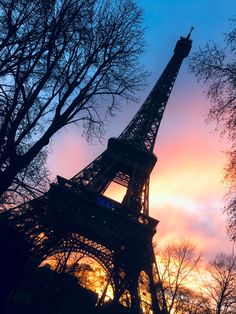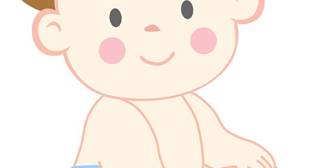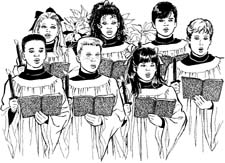
Salty Sam’s Fun Blog for Children
Number 449
The Reformation
Hello Everyone
ln his art lesson this week, Bill painted a wonderful picture.
lt was of some bats flying about around a spooky ruin. The walls were very old and crumbling; there were arches and towers made out of stone and the moon was shining a light down from the sky and casting shadows across the grass growing between the walls.
Miss Pringle said that it was very good.
She always likes to encourage the children in her class whenever she can.
She said that the picture reminded her very much of a ruin that she had recently visited with her boyfriend Steve.
lt was the remains of a monastery that had been destroyed during the Reformation and since then, over many years, it had deteriorated even further. ln a way it was both romantic and sad.
The children did not understand what she meant by the Reformation so she told them the story.
ln 1517, a German man called Luther published a document. lt contained 95 criticisms that he had of the Catholic Church.
ln those days, all churches were Catholic ones.
Luther was what is called a theologian. A theologian is a person who thinks and talks about God and religion.
Luther listed all the ways he thought the Church was corrupt. That means they were not behaving in a good way and they were abusing their power and authority.
The document was to send ripples of discontent through Europe.
Luther wanted things to change. A lot of people agreed with him. They were called Protestants.
Henry Vlll who was the King of England at the time defended the Catholic Church at first, but when the Pope did not agree to his request to divorce his first wife, Catherine, he broke the country away from the rule of the Catholic Church and put himself in the place of Supreme Head of the Church of England.
After his break with Rome, Henry asked his principle (top) servant, Thomas Cromwell, to check into the affairs of all the monasteries in England. He set up a commission – this meant that an investigation was carried out.
Thomas Cromwell became Lord Privy Seal in 1536 – that was his title. This meant he was a chief minister. (Don’t get confused with Oliver Cromwell.)
Henry often asked for Cromwell’s advice because he had proved to be a clever administrator and wise friend.
Cromwell was trained as a lawyer so knew how to use the law in any situation. He helped Henry to annul (end) his first marriage and put him at the head of the church in England.
Many of the monasteries were found to be corrupt during the investigation and because Henry wanted to find money to fund his lavish lifestyle he ordered that they be closed and their property taken. Henry’s governance was very different from that of his father. (Blog Post 445)
The smaller monasteries were closed first and then in 1539 the rest were dealt with too.
The men that carried out the orders were very often brutal in the way they did this and many beautiful buildings were vandalized.
Henry and Cromwell wanted to take the wealth from the monasteries and break their power too. Cromwell also took on the job of reforming the workings of the English government.
ln 1535, the first translation of the Bible in to English was completed by Miles Coverdale. lt was published in Zűrich in Switzerland.
ln 1537, Henry licensed for publication in England, a translation by Thomas Matthew. lt was for reading in churches.
lt was of supreme importance to the Protestants that the Bible should be accessible to the masses. The Bible written in the language that the people spoke was a massive step forward for them. They believed that people could get closer to God if they could read the Bible for themselves.
The monks pushed out of their positions must have been scared and heart-broken at their treatment. They may have even been angry.
But the King wanted his law and authority to be the highest power in the land. He thought a lot of the monks deserved this harsh treatment.
lt was a step towards a more modern kind of society.
But the Reformation also had a far-reaching effect on communities.
The monasteries had money; the monks had land that they rented out to farmers to raise revenue from rent.
The monks also had gardens that they grew vegetables and herbs in. They kept bees and other livestock.
They produced food for their own needs and those of others and they knew how to make medicines from plants; some of them could be very powerful.
They were educated men who could read and write and teach others to do the same. They understood Latin which was the language of the Catholic Church.
So when people were very down on their luck, or very poor, or ill and needed help, the Church was always there to give them that help; and they had the resources to do so.
The monks also traditionally gave travellers and pilgrims a safe place to sleep at night on their journeys.
Sometimes the monks would even take in orphans and educate them so they could become monks too.
So the dissolution of the monasteries meant that a lot of social support was taken away from those in need. lt caused a lot of pain and destruction.
By the end of his reign, for many reasons, Henry Vlll was not a popular king.
So the Reformation changed English society forever in maybe both good ways and bad.
lf you like my blog, please support it by telling all your friends and followers about it.
Thank you!
And see you again next Fun Friday!
Love and kisses
Salty Sam

www.christina-sinclair.com


Bill and Bob’s Joke of the Week![]()
![]()
Bob: Why did Noah tell the chickens on the Ark off?
Bill: Because they were using fowl language.

Salty Sam © Christina Sinclair 2015
Unauthorized use and/or duplication of material from this blog without express and written permission from this blog’s author and owner is strictly prohibited.
Links may be used to www.christina-sinclair.com

Picture Gallery
 Thomas Cromwell
Thomas Cromwell
 Church ruins can look very spooky
Church ruins can look very spooky


 THE SALTY SAM NEWS DESK
THE SALTY SAM NEWS DESK

When the children in Miss Pringle’s class came back from their summer holidays they had lots to talk about.
Miss Pringle had set them a task to choose some homework to do themselves.
I told you all about it on Blog Post 439.
All the children had chosen different things to do and told the class about their projects one afternoon.
Nobody had done the suggestion of making a scrapbook about a country with lots of information and pictures so Miss Pringle told her class that she would set the idea as a class project.
This week, she brought in some scrap books, coloured paper, pictures printed off the Internet sorted into different envelopes and some holiday brochures.
She put the names of some countries written on some slips of paper into a box and the children pulled out a name each and got to work.
They filled their books with information about capital cities and national costumes and national food.
There were lots of maps and pictures of scenery and famous landmarks.
The children also wrote poems and decorated their books with their own illustrations and decorations.
Scrapbooks often have stickers in them but the children drew their own little pictures in the spaces between the pictures and pieces of writing.
The books the children made were very colourful and very interesting.
And the children had a lot of fun making them.
They showed their books to the rest of the class to explain what they had discovered.

Did you know that the Eiffel Tower was only supposed to be in existence for a short time as the gateway to the 1889 World’s Fair; but people liked it so much they kept it?
It was the tallest man-made structure in the world for 41 years and is now one of the most visited landmarks.

*********************
TO ADVERTISE ON THIS BLOG
PLEASE CONTACT:
christina.sinclair.ads@aol.co.uk
*********************

 Quick Quiz
Quick Quiz
What do these confusing words mean?
- cassock/hassock
- surplice/surplus
- stationary/stationery
- compliment/complement
- unused/disused
- empathy/sympathy
- historic/historical
- flaunt/flout
- hanged/hung
- oral/aural
- urban/urbane
- procrastinate/prevaricate
- magnet/magnate




lt’s the Weekend!

HOW TO MAKE A BABY HAT
This hat fits a head with a 26cm circumference
Don’t decorate it with anything hard that could slip under the baby’s head.
If you want to decorate the hat in the corners, make sure everything is washable and securely sewn on.
BABY HAT (KNIT ONE)
Using 4mm knitting needles and rainbow dk yarn cast on 40 stitches
Knit 40 rows of garter stitch
Cast off
For a head with a 44cm circumference cast on 60 stitches and knit 70 rows of garter stitch.


Please note that the material on this blog is for personal use and for use in classrooms only.
It is a copyright infringement and, therefore, illegal under international law to sell items made with these patterns.
Use of the toys and projects is at your own risk.
©Christina Sinclair Designs 2015


Quick Quiz Answers
- cassock/hassock a gown of a clergyman/a cushion to kneel on
- surplice/surplus a white gown of a choir boy or girl/more than required
- stationary/stationery not moving/writing materials
- compliment/complement say nice things about someone/match in/up well with
- unused/disused not used yet/not used anymore
- empathy/sympathy to be in tune with how someone feels/to feel sorry about the way someone feels
- historic/historical famous, important, influential/relating to history
- flaunt/flout show off/defy (like laws and rules)
- hanged/hung killed by a noose around the neck/past tense of to hang – to put up an object like a picture or garment
- oral/aural relating to the mouth/relating to the ears
- urban/urbane relating to town or city/sophisticated, cultured
- procrastinate/prevaricate delay doing something until a later time/tell an untruth, lie
- magnet/magnate an object that produces a magnetic field/a person of great influence in a particular enterprise or area of knowledge eg.a shipping magnate
 A choir
A choir


